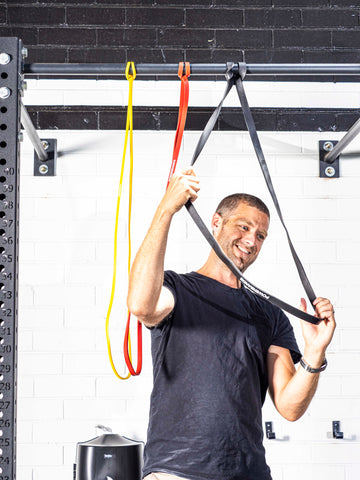Exercise bands are a staple in many fitness routines, beloved for their simplicity and effectiveness. These bands offer versatile options for various workouts, helping to improve strength, flexibility, and endurance without the need for bulky gym equipment. Whether used for warming up or to intensify exercises, they are perfect for both beginners and fitness enthusiasts. However, while exercise bands are a handy tool, issues like stretching and snapping can occur, leading to frustration and even potential workout setbacks if not addressed properly.
Stretching and snapping issues might sound familiar to anyone who regularly uses exercise bands. These problems can impact the effectiveness of workouts and the overall lifespan of the bands. Understanding what causes these issues and how to solve them will ensure that your bands stay in great shape, providing safe and efficient training sessions. Let's explore how to recognize these problems and keep your exercise bands performing at their best.
Recognising Signs of Stretching
Identifying when exercise bands are overstretched is crucial for maintaining their functionality. An overstretched band loses its elasticity and can offer less resistance, making your exercises less effective. Here’s how to determine if your band is showing signs of wear:
- Visual Inspection: Look for visible wear and tear, such as thinning or faded areas. These are indicators that the band is overstretched.
- Change in Resistance: If the band feels too easy to stretch compared to when it was new, it might have lost its spring.
- Cracks or Nicks: These are early signs that the material has been pushed beyond its limits.
Several factors can lead to stretching, such as using bands with inappropriate resistance for particular exercises or not maintaining them properly. To prevent overstretching, always select the right band for your strength level and type of workout. Additionally, limit exercises that require excessive elongation of bands.
When you notice these signs, here are immediate steps to take:
1. Switch Bands: Use a different band to continue your workout, especially if the current one feels weak or shows any damage.
2. Adjust Exercises: Modify your exercises to reduce the strain on your bands until you're sure they're in good shape.
3. Frequent Checks: Incorporate regular checks of your bands at the beginning of every workout session.
By keeping an eye out for these signs and taking preventive measures, you ensure your exercise bands are ready to provide effective workouts without interruptions. This vigilance not only extends the life of the bands but also keeps your fitness routine running smoothly.
Preventing Snapping of Exercise Bands
Exercise bands sometimes snap, leaving users puzzled and workouts interrupted. Fortunately, there are straightforward ways to minimise this risk. First, understanding the reason behind snapping is key. Snapping usually happens when bands are used incorrectly or not stored well. Let's dive into some basic tips to keep your bands in one piece.
- Proper Usage: Make sure to use bands within their recommended resistance range. If a band feels strained or on the verge of breaking, switch to a band that's better suited for your workout.
- Regular Inspection: Before each use, inspect the band for any tears or weak spots. Catching these early can prevent a snap during exercise.
- Controlled Movements: Avoid sudden, sharp movements that put extra stress on the bands. Instead, maintain steady and controlled motions.
Storage also plays a big role in maintaining band integrity. Store bands in a cool, dry place away from direct sunlight or heat sources. This prevents the material from becoming brittle, which can lead to snapping. When not in use, hang them loosely or lay them flat to avoid unnecessary tension.
Choosing the Right Exercise Bands
Selecting the right exercise band can make a big difference in exercise safety and effectiveness. There are a few factors to weigh when choosing your bands:
- Material: Bands made from high-quality, durable materials tend to last longer. Latex is a popular choice due to its ability to stretch and snap back effectively.
- Thickness and Resistance Levels: Different workouts call for different levels of resistance. Generally, thicker bands provide more resistance and are suitable for more intense workouts.
- Trials: Whenever possible, try a band before buying it. Test how it feels during several kinds of exercises to ensure it matches your fitness level and needs.
By investing some time in selecting the right band, you're setting up a safer and more productive workout experience. This effort on the front end saves you from unnecessary interruptions or injuries later on.
When to Replace Your Exercise Bands
Knowing when to replace an exercise band is as important as choosing the right one. Continuing to use a worn band not only diminishes the effectiveness of your workout but also introduces potential safety risks.
Look for signs when it's time to switch out a band, such as:
1. Visible Damage: Cracks, tears, or excessive thinning are telltale signs of wear.
2. Loss of Elasticity: If a band no longer offers the same level of resistance, it could be losing elasticity and might need replacing.
3. Signs of Material Fatigue: If you notice any unusual stretching beyond what is typical, it might be time for a new band.
Replacing your exercise bands when needed helps keep your workout dynamic and safe. Remember that a small investment in new bands can save you from injuries and ensure every workout counts.
Keep Your Workouts Safe and Effective
Maintaining your exercise bands and addressing issues like stretching and snapping can keep your workouts smooth and worry-free. Taking proactive steps such as selecting the right band, inspecting regularly, and replacing as needed ensures that every workout is optimised for success.
Consistency is key when it comes to workouts and equipment care. By routinely checking and maintaining your bands, you empower your fitness journey. Workout confidence grows when you use well-maintained equipment, making it easier to stick to your routine and achieve your fitness goals.
Explore our wide range of exercise bands at POWERBANDS® and find the perfect match for your fitness routine. These bands are designed to support your workout by offering durable choices that fit your needs. Discover how the right band can make all the difference in maintaining a safe and effective workout environment.








